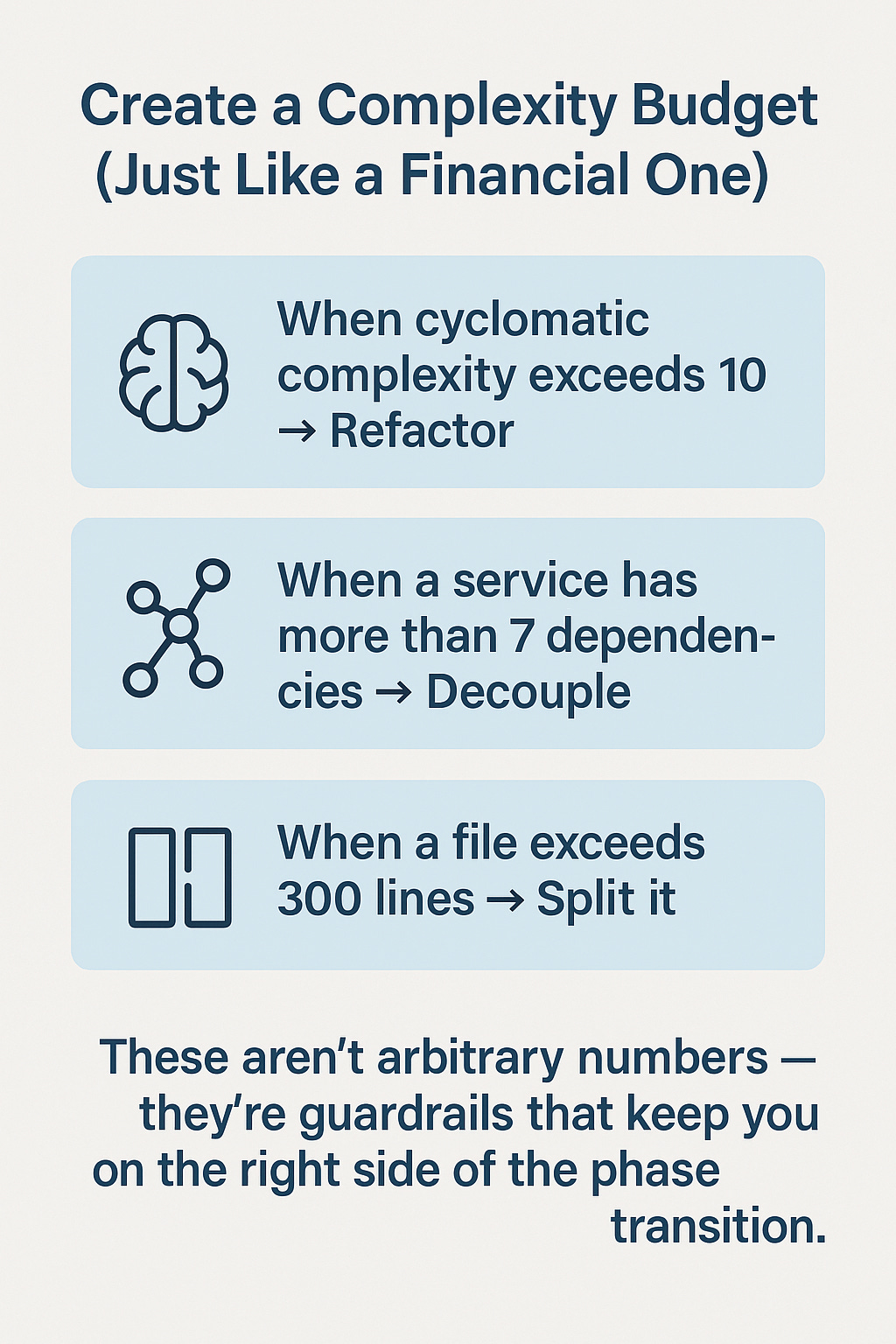The CTO's Drowning Team
When Your Star Developer Takes Three Weeks to Ship a Button
The Consortium for Information & Software Quality (CISQ) published a sobering report in 2022: poor software quality cost the US economy $2.41 trillion, with accumulated technical debt reaching $1.52 trillion1. These aren't abstract numbers on a spreadsheet. They represent careers destroyed, startups shuttered, and brilliant engineers updating their LinkedIn profiles after yet another "failure to scale" conversation.
The pattern is devastatingly predictable. A startup launches with three developers shipping features daily. Success brings investment. Investment brings hiring. Suddenly, the same team needs three weeks to add what looks like a simple button. The CEO's solution? "We need more developers!" And that's when everything falls apart.
Fred Brooks warned us about this in 1975 in The Mythical Man-Month: "Adding manpower to a late software project makes it later."2 Yet here we are, nearly 50 years later, watching CTOs get fired for the exact same "failure". Not because they're incompetent, but because they're trapped in a system that's fundamentally broken.
The Invisible Cliff Your Engineering Team Just Drove Off
Picture your best engineer. The one who used to prototype entire features over a weekend. Now they're telling you it'll take three sprints to add what seems like a simple feature. Your gut reaction might be that they've checked out, gotten comfortable, lost their edge.
You'd be dead wrong.
According to a 2017 Microsoft study, developers spend 58% of their time just trying to understand existing code, especially once the software is shipped and has to be maintained3. Your star developer hasn't become lazy - they're drowning in complexity that compounds with every line of code added to your system.
The research backs this up painfully. A Tidelift and New Stack survey found that developers spend only 32% of their time actually writing new code or improving existing code. Another 35% goes to managing code, including 19% on maintenance, 12% on testing, and 4% on security issues4. The rest is spent on meetings, operational tasks, and what one developer called "the soul-crushing exercise of trying not to break things."
Why Your CEO Is About to Make Everything Worse
Here's the scene playing out in conference rooms across tech companies right now: The product roadmap is slipping. Features that used to take days now take weeks. The board is asking uncomfortable questions. The CEO calls an all-hands.
"We're falling behind," they announce. "But I have good news - we're hiring 10 more developers!" or, “we don’t need those 10 developers because AI!”.
The senior engineers exchange knowing glances. The tech lead's jaw tightens. The CTO forces a smile while mentally updating their resume. Everyone in that room knows what's about to happen, but nobody has the language to explain why this "solution" will detonate like a grenade in a fireworks factory.
The mathematics are brutal. As Brooks explained, when n people need to communicate, the communication channels increase by the formula n(n-1)/2. Those 10 new developers don't add 10 new relationships - they add 45. Each one is another chance for miscommunication, another synchronization point, another meeting that pulls your existing team away from actually shipping code.
The $2.41 Trillion Problem Hiding in Plain Sight
McKinsey found that tech debt amounts to 20-40% of the entire value of technology estates before depreciation. More troubling, about 30% of CIOs believe that more than 20% of their technical budget for new products is actually diverted to resolving tech debt issues5.
This is about survival, not only about code quality. The average tenure for CIOs and CTOs at major companies is just 4.3 years, with the shortest tenures in healthcare at 3.9 years67. Why? Because they're hired to fix problems that can't be solved by throwing bodies at them, then fired when that approach inevitably fails.
Think about that for a moment. We have an entire industry where technical leaders last about as long as a presidential term, not because they're incompetent, but because they're asked to violate the fundamental laws of software physics.
The Phase Transition That Nobody Talks About
In the book Liquid, co-authored by yours truly, we talk about software systems undergoing a "phase transition" - like water turning to steam. Below a certain complexity threshold, your team operates in "liquid mode" - fluid, adaptable, fast. But cross that threshold, and suddenly you're in "vapor mode" where every change disperses unpredictably through the system.
The threshold typically hits between 50,000 and 150,000 lines of code, depending on architecture quality. Below this point, changes flow smoothly. Above it, that simple button your CEO wants might touch seven different services, require updates to three APIs, and risk breaking features that seem completely unrelated.
One study found that in poorly architected systems, the average code change touches 7.3 other files. In well-architected systems? Just 1.8 files. That's a 4x difference in complexity for every single change your team makes.
The Meeting Where CTOs Die
I've watched this movie too many times. The CEO presents their "solution" with the confidence of someone who's never written a line of production code. More developers. Aggressive deadlines. "Sprint harder." The phrase "artificial intelligence" gets thrown around like fairy dust that will somehow make the complexity disappear.
Meanwhile, your existing developers are spending their mornings in stand-ups, their afternoons in planning meetings, and their evenings trying to remember what they were supposed to be coding in the first place. The tech industry average employee tenure has dropped to around 3 years8, not because developers are flighty, but because they're exhausted from working in systems where every day feels like defusing a bomb while someone keeps adding more wires.
The Courage to Stop Adding Fuel to the Fire
Here's what nobody wants to hear: Sometimes the only winning move is to stop playing. Stop adding features. Stop hiring developers. Stop pretending that one more sprint planning methodology will fix architectural problems that have been compounding for years.
The companies that survive this transition do something that feels like career suicide but is actually salvation: they declare technical bankruptcy. Not literal bankruptcy, but an acknowledgment that the current system is fundamentally broken and needs architectural intervention.
Netflix did this when they moved from monolith to microservices. Amazon did it with their service-oriented architecture transformation. Every major tech success story includes a moment where leadership chose architecture over features, foundation over facade.
Your Next Move (Before It's Too Late)
First, measure your reality with brutal honesty. Not vanity metrics like story points or lines of code, but the metrics that matter: How long does it take to ship a one-line change to production? How many files does the average pull request touch? How long do your tests take to run?
Second, have the hardest conversation of your career. Sit down with your CEO and board with data, not emotion. Show them the $2.41 trillion cost of ignoring technical debt. Explain Brooks' Law with concrete examples from your own codebase. Make the invisible visible.
Third, create a complexity budget just like you have a financial budget. When cyclomatic complexity exceeds 10, refactor. When a service has more than 7 dependencies, decouple it. When a file exceeds 300 lines, split it. These aren't arbitrary numbers but guardrails that keep you on the right side of the phase transition.
The Conversation That Changes Everything
The next time someone suggests hiring more developers to speed up delivery, share these numbers. Share the story of every CTO who tried to hire their way out of a complexity problem and ended up updating their LinkedIn profile instead.
Your engineering team isn't slow. They're not lazy. They're not incompetent. They're drowning in complexity that compounds every single day. And adding more people to a drowning team doesn't create a rescue - it creates more people drowning.
The most forward-thinking organizations recognize that Developer Experience (DevEx) directly impacts productivity, quality, and retention. They're shifting from asking "how can we make developers work faster?" to "how can we make it easier for developers to work?"
The water is boiling. Your star developers are sending out resumes. Your architecture is creaking under the weight of quick fixes and workarounds. You can keep adding heat, hiring more developers, and setting more aggressive deadlines. Or you can finally turn down the flame.
The choice is yours. But remember: with an average CTO tenure of just 4.3 years, you might not get a second chance to make it.
Your developers are waiting for you to understand. Your future is waiting for you to choose architecture over features, sustainability over speed, courage over comfort. Because once you see this system at work, you can't unsee it. And more importantly, you can fix it.




